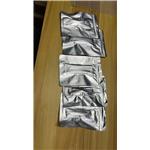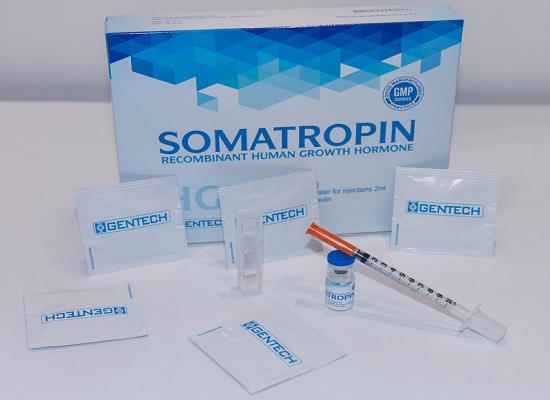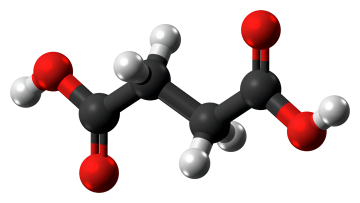Bioactivity of Human Growth Hormone
General description
Human Growth Hormone (HGH) is a single-chain, non-glycosylated, 191 amino acid hydrophilic globulin with a molecular weight of 21700Da and an isoelectric pI of 4.9. There are disulfide bonds between cysteine residues at sites 53 and 165 and 182-189. About 75% of the growth hormone secreted by the anterior pituitary gland eosinophils is secreted in this form of molecular structure, and another 5% ~ 10% is secreted in the form of molecular weight 20kDa.
Bioactivity
Growth hormone deficiency
In 1958 the first recorded case of a patient treated with human growth hormone for growth hormone deficiency was published. Since that time, the source and availability of human growth hormone have changed. With the increased availability of growth hormone, there has been an uptrend in the level below which childhood growth hormone deficiency is diagnosed based on provocative GH stimulation testing. This increase is despite better specificity of growth hormone assays in addition to a lack of supportive evidence regarding appropriate normal values. With these trends the diagnosis of childhood growth hormone deficiency is evolving, and clinicians should be aware that this may have potential ethical implications [1].
Biochemical growth hormone deficiency is prevalent among human immunodeficiency virus-infected patients, but if this condition is clinically relevant remains challenging. The aim is to prospectively compare the growth hormone deficiency/insulin-like growth factor-1 status of 71 human immunodeficiency virus-infected patients with impaired growth hormone response to growth hormone releasing hormone + Arginine with that of 65 hypopituitary patients affected by a true growth hormone deficiency secondary to pituitary disease. The main outcomes were: basal serum growth hormone, insulin-like growth factor-1, insulin-like growth factor binding protein 3, growth hormone peak and area under the curve after growth hormone response to growth hormone releasing hormone + Arginine test, body mass index, waist and hip circumference, and body composition by dual energy X-ray absorptiometry. Insulin-like growth factor-1 binding protein 3, basal growth hormone (p < 0.005), growth hormone peak and area under the curve after growth hormone response to growth hormone releasing hormone + Arginine, waist to hip ratio, insulin-like growth factor-1, fasting glucose, insulin, and triglycerides (p < 0.0001) were lower in hypopituitary than human immunodeficiency virus-infected patients. Total and trunk fat mass by dual energy X-ray absorptiometry were higher in hypopituitary than in human immunodeficiency virus-infected patients (p < 0.0001). In all the patients total body fat was associated with both growth hormone peak and area under the curve at stepwise linear regression analysis. The degree of growth hormone deficiency is more severe in hypopituitary than in human immunodeficiency virus-infected patients, suggesting that the function of growth hormone/insulin-like growth factor-1 axis is partially rescued in the latter thanks to a preserved pituitary secretory reserve. Data from the current study suggest that human immunodeficiency virus-infected patients with peak growth hormone < 9 mg/L may have partial growth hormone deficiency and clinicians should be cautious before prescribing recombinant human growth hormone replacement treatment to patients living with human immunodeficiency virus [2].
Correlation between urinary growth hormone secretion and pituitary growth hormone secretion
Thirty-five children with short-stature underwent insulin-loading and sleep tests for assessment of secretion of human growth hormone. Correlations between the levels of human growth hormone in the serum and urine during the tests were examined to elucidate the clinical significance of urinary human growth hormone levels in short children. The concentration and total amount of human growth hormone in the urine correlated significantly with the peak concentration of serum human growth hormone (r = 0.81, p < 0.001 and r = 0.80, p < 0.001, respectively) and the integrated concentration of human growth hormone (r = 0.85, p < 0.001 and r = 0.85, p < 0.001, respectively) in the insulin-loading test. The concentration and total amount of human growth hormone in the morning urine also correlated significantly with the peak concentration of serum human growth hormone (r = 0.80, p < 0.001 and r = 0.70, p < 0.001, respectively) and the integrated concentration of serum human growth hormone (r = 0.80, p < 0.001 and r = 0.72, p < 0.001, respectively) in the sleep test. The concentration or total amount of human growth hormone in the urine differed significantly among children with human growth hormone deficiency, those with nonendocrine short stature, and those with normal stature (p < 0.05). These data suggest that measurement of human growth hormone in the urine may be used to assess secretion of human growth hormone, serving as a screening test for human growth hormone deficiency in children [3].
Cardiovascular effects of growth hormone therapy in adults with growth hormone deficiency - stimulation of the renin aldosterone system
1. In adult humans with growth hormone deficiency, treatment with growth hormone has recently been shown to have major anabolic effects and to improve exercise performance. The cardiovascular effects of growth hormone in adults with growth hormone deficiency were examined in 24 patients treated with recombinant human growth hormone (0.07 units/kg at night) in a double-blind, placebo-controlled trial lasting 6 months.
2. Compared with placebo, resting M-mode echocardiography showed increases in left ventricular end-diastolic dimension and stroke volume in the group treated with recombinant human growth hormone. No differences were noted between the groups with respect to left ventricular end-systolic dimension, fractional shortening, wall thicknesses or mean arterial blood pressure. Left ventricular myocardial mass increased in the group given recombinant human growth hormone.
3. The supine plasma renin activity was increased and remained elevated over the 6 months, whereas the plasma aldosterone concentration was unchanged, after treatment with recombinant human growth hormone. Clinical signs of sodium retention were evident during the first 3 months of treatment with recombinant human growth hormone. 4. We conclude that treatment with recombinant human growth hormone in adults with growth hormone deficiency resulted in small increases in left ventricular pre-load, due to the sodium-retaining action of growth hormone. Activation of the renin-aldosterone system was involved in such changes. Myocardial hypertrophy was observed without changes in mean arterial pressure, reflecting the anabolic action of growth hormone [4].
References
[1] Henry R K. Childhood growth hormone deficiency, a diagnosis in evolution: The intersection of growth hormone history and ethics[J]. Growth Hormone & IGF Research, 2020, 55: 101358.
[2] Diazzi C, Brigante G, Ferrannini G, et al. Pituitary growth hormone (GH) secretion is partially rescued in HIV-infected patients with GH deficiency (GHD) compared to hypopituitary patients[J]. Endocrine, 2017, 55(3): 885-898.
[3] Kida K, Ito T, Hayashi M, et al. Urinary excretion of human growth hormone in children with short stature: correlation with pituitary secretion of human growth hormone[J]. The Journal of pediatrics, 1992, 120(2): 233-237.
[4] Cuneo R C, Salomon F, Wilmshurst P, et al. Cardiovascular effects of growth hormone treatment in growth-hormone-deficient adults: stimulation of the renin-aldosterone system[J]. Clinical science (London, England: 1979), 1991, 81(5): 587-592.
Related articles And Qustion
Lastest Price from Somatotropin manufacturers

US $0.00-0.00/G2025-04-21
- CAS:
- 12629-01-5
- Min. Order:
- 1G
- Purity:
- 99%
- Supply Ability:
- 1 ton/year

US $95.00-80.00/kit2025-04-21
- CAS:
- 12629-01-5
- Min. Order:
- 1kit
- Purity:
- 99%
- Supply Ability:
- 10000kits



